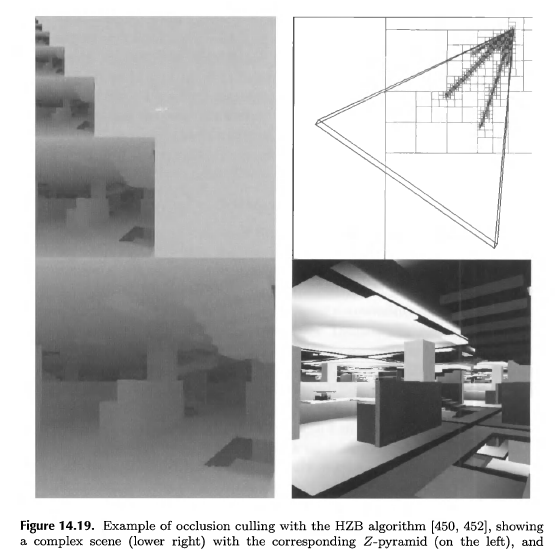I'm reading the Occlusion Culling section in Real-Time Rendering 3rd Edition and I couldn't understand how it works. Some questions:
How does having a "Z-pyramid" contribute? Why do we need multiple resolutions of the Z-buffer? In the book, it's displayed as follows (left side):
![enter image description here]()
Is the Octree structure the same Octree that is used for general frustum culling and rendering? Or is it a specialized Octree made just for the occlusion culling technique?
A more general question: In a previous section (and also here), the Occlusion Query term is described as "rendering a simplified bounding-volume of an object and comparing it's depth results to the Z-buffer, returning the amount of pixels that are visible." What functions in OpenGL are associated with this Occlusion Query concept?
Is this technique the standard for open-world games occlusion culling?


0.5(ex: by projecting its AABB and checking the furthest point). It also means you get more temporal locality on the upper levels of this depth hierarchy which only requires a small number of pixel entries. It gets a lot more involved with the way this interacts with shaders, but that would be the kind of broad conceptual reason for a depth buffer hierarchy. – Nada